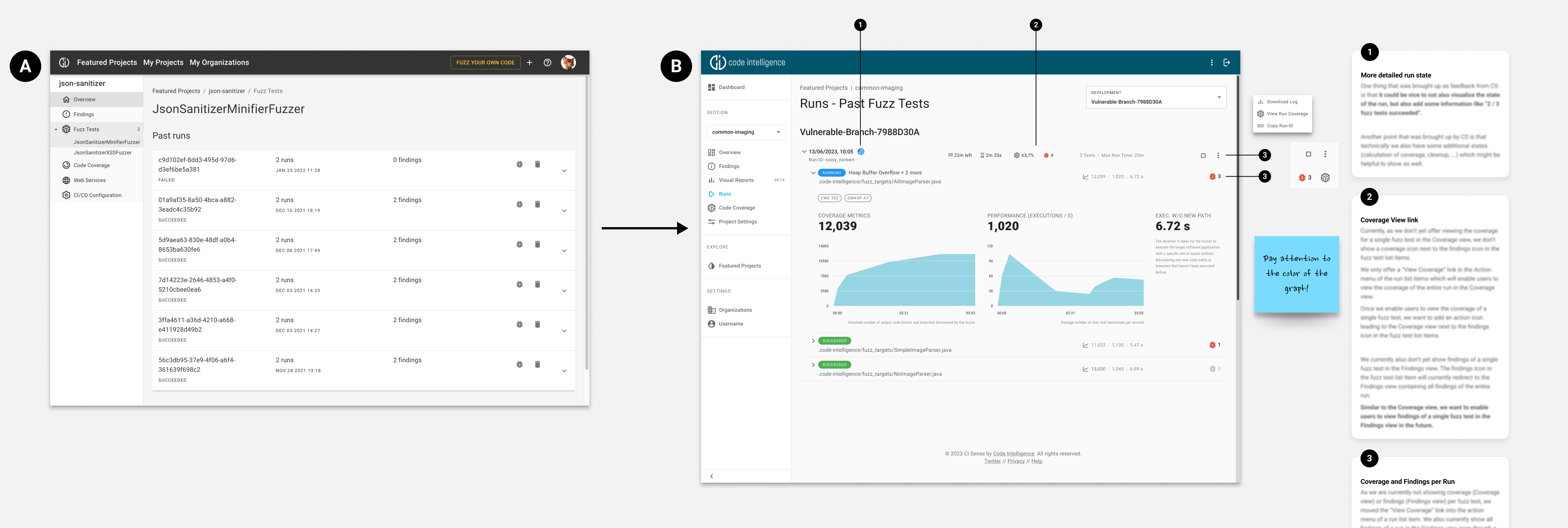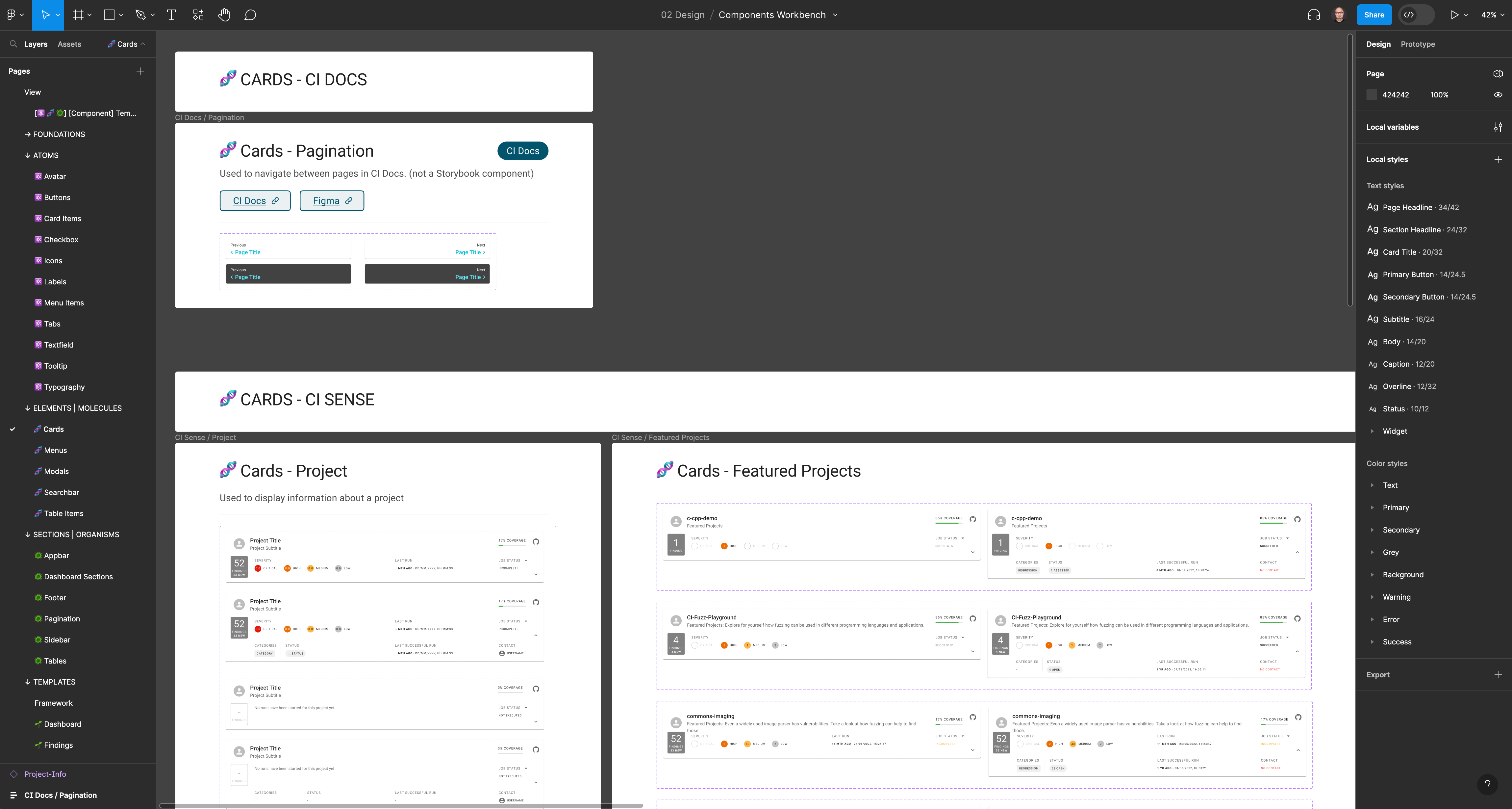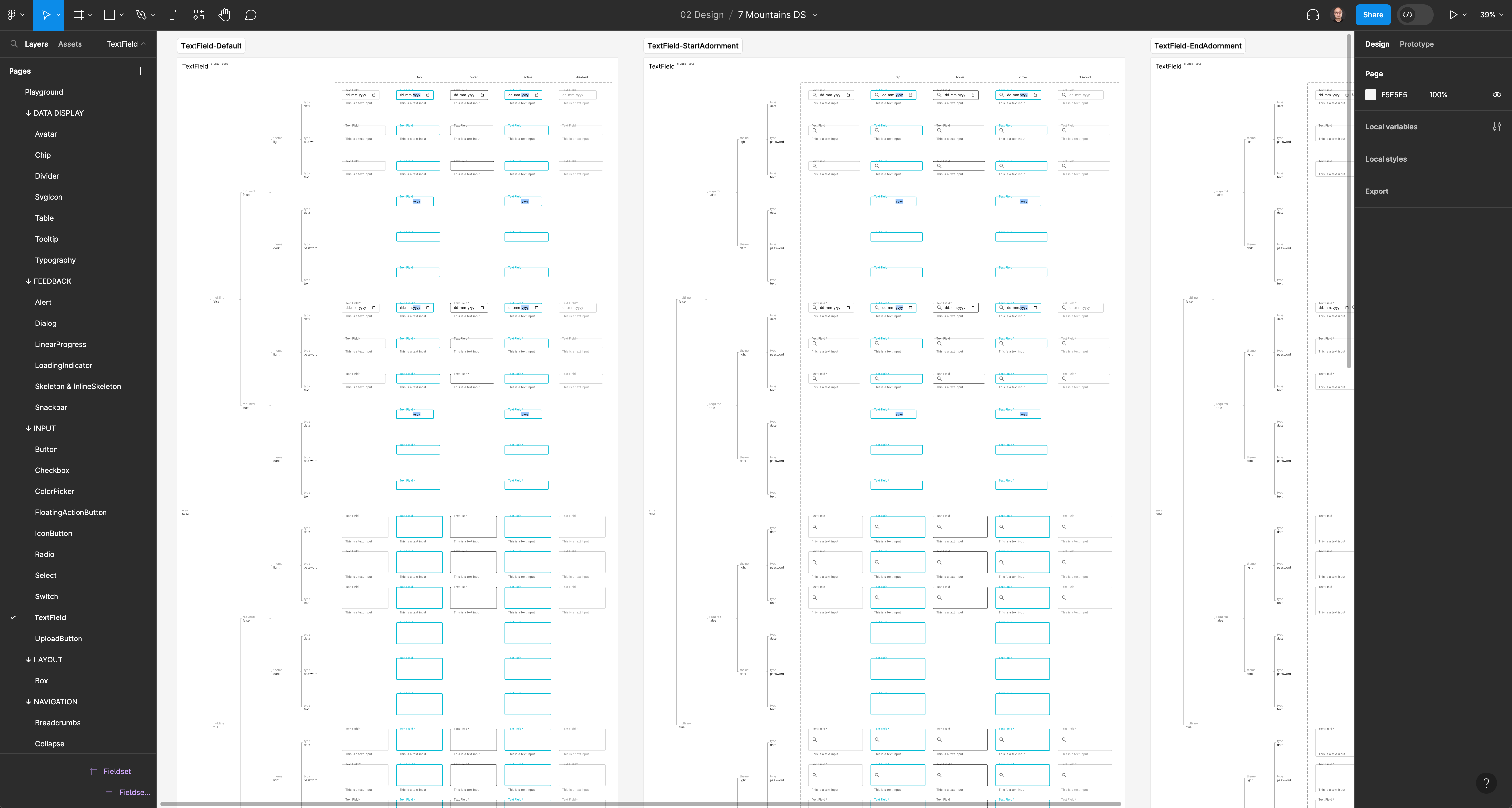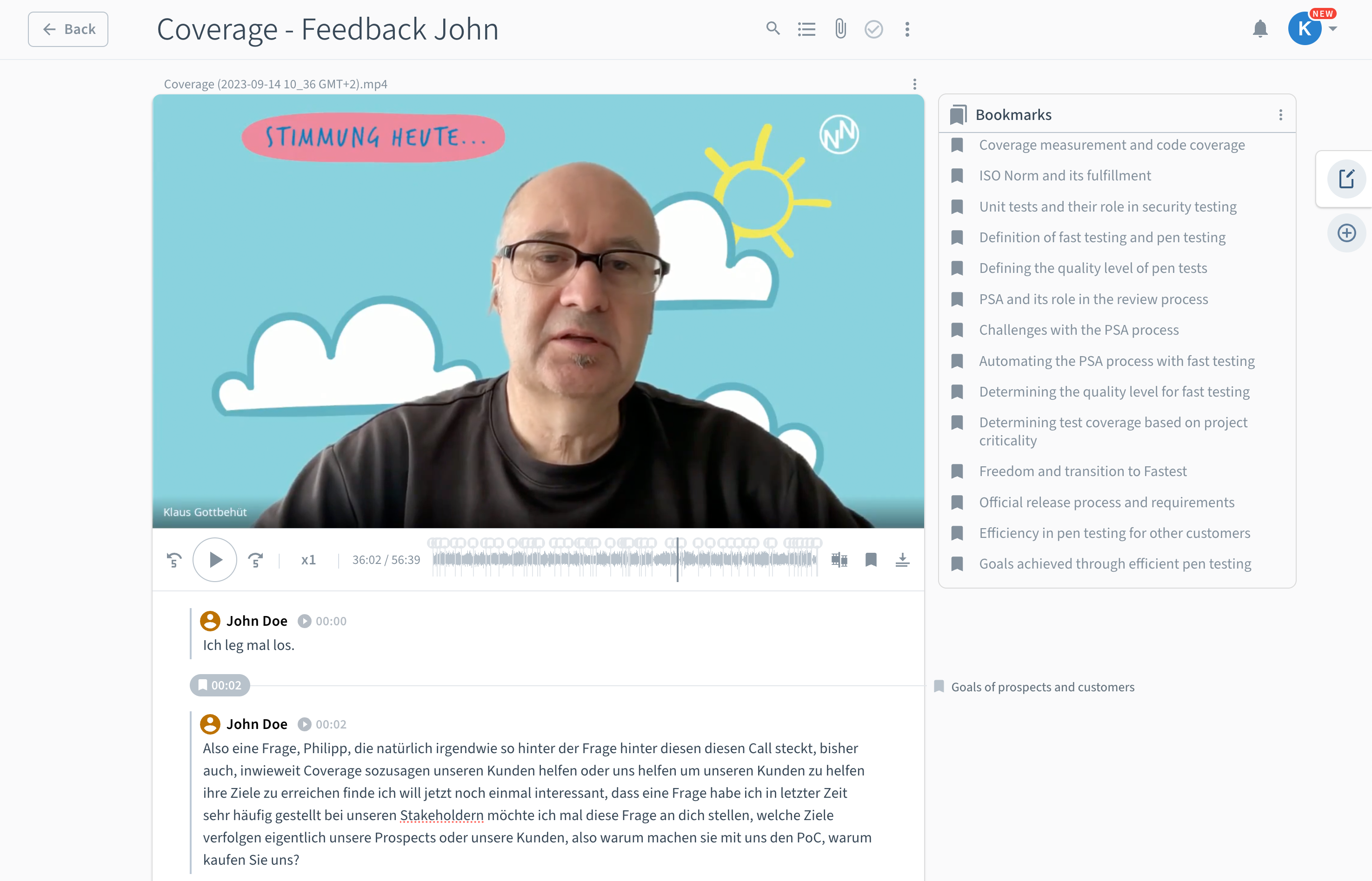AI-Based Software Security Testing for Developers
B2B Product
• New Product • Design Management • UX • UI
2022–2024
Introduced and established a structured product design process at Code Intelligence.
Code Intelligence (CI) enables developers to improve the security and stability of their software by automating and simplifying powerful security testing with DAST. Continuous fuzzing (white-box testing approach) uses instrumentation of the code base to refine test inputs through AI. Companies such as Google, Deutsche Telekom and CARIAD use CI's solutions.
What have I ACHIEVED AT CI in this 2,5 years?
I introduced a product design process at Code Intelligence and embedded user-centred design (UCD) in the company. As an outcome, the creation, application and integration of fuzz testing for developers and organisations has improved significantly. Within Code Intelligence, the understanding of UCD has improved, leading to greater efficiency.
On the product side, the UX has demonstrably improved significantly for users and customers.

Contextual inquiry customer success with exemplary action
Hypothesis | Outcome | Validation
Step 1 - Understanding CI's product
- Develop understanding of users and their problems
- Understand the solutions offered by CI to user needs
- Learn technical product fundamentals
Step 2 - Customer Orientation - Creating a Systematic Basis for Decision Making
- Analyze existing data
- Introduce qualitative and quantitative feedback and analysis
- Qualitative research with customers and colleagues in technology consulting
- Quantitative research using analytics tools such as PostHog and HotJar
- Introduction of a continuous discovery process

UX review
Old test-view (A) and new (B) proposal after several iterations and user feedback sessions
Step 3 - Setting priorities - outcome-oriented product design
- UX Review and heuristic pattern analysis
- Analyze user journeys and user flows
- Analyze information architecture

The new design system "Seven Mountains"
Component and pattern library

The new design system "Seven Mountains"
Atomic design library
Step 4 - Communication and collaboration of teams - introducing standards
- Created understanding of the benefits of UX in the Organization
- Hypothesis-driven development
- Develop and introduce design system "7 Mountains"
- Implementation of code-driven development
- Iterative design cycles in coordination with agile cross-functional development teams
- Build a design team

Contextual inquiries with customers and users
Qualitative analysis with the use of AI for transcription to synthesize user feedback

Data analizing with PostHog
Quantitative analysis with data tools and testing methods
Step 5 - Measuring success - validation and evaluation
- Contextual inquiries with customers and users
- Quantitative Validation
- Establishing a common understanding of ROI through UX
My software tools
- Collaboration with Miro
- Evaluate Insights with Condens AI
- Design tool Figma
- Developer documentation with Storybook